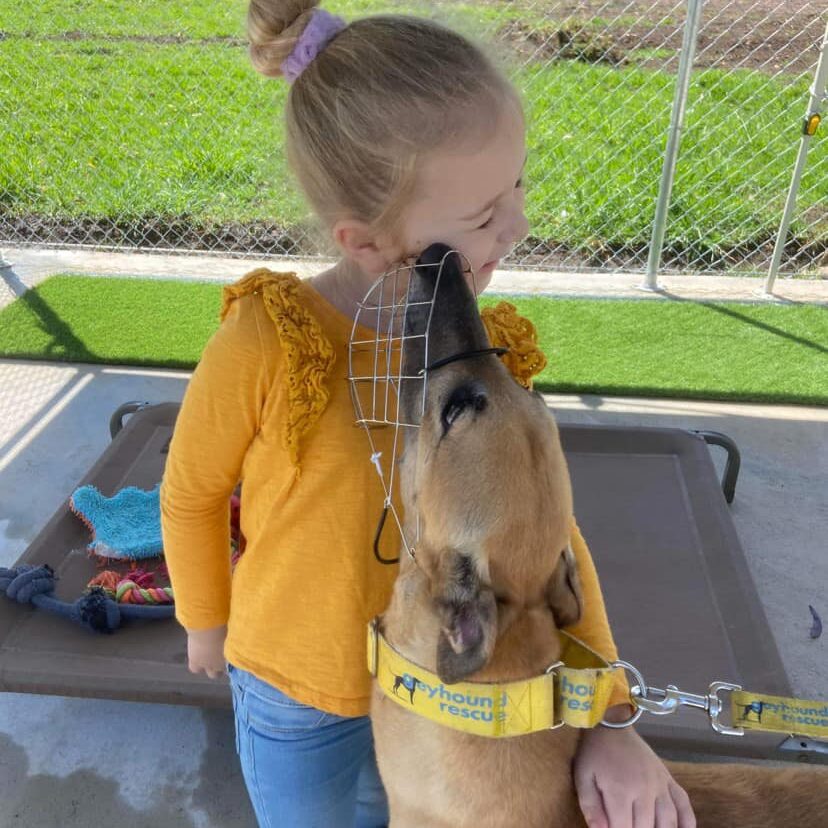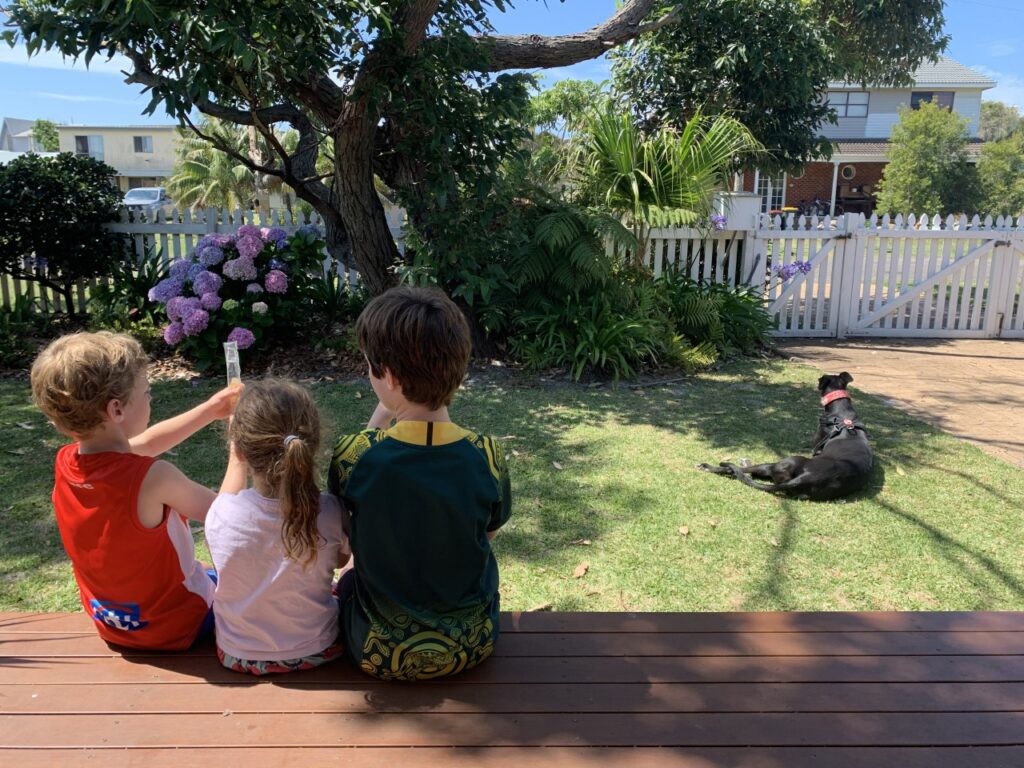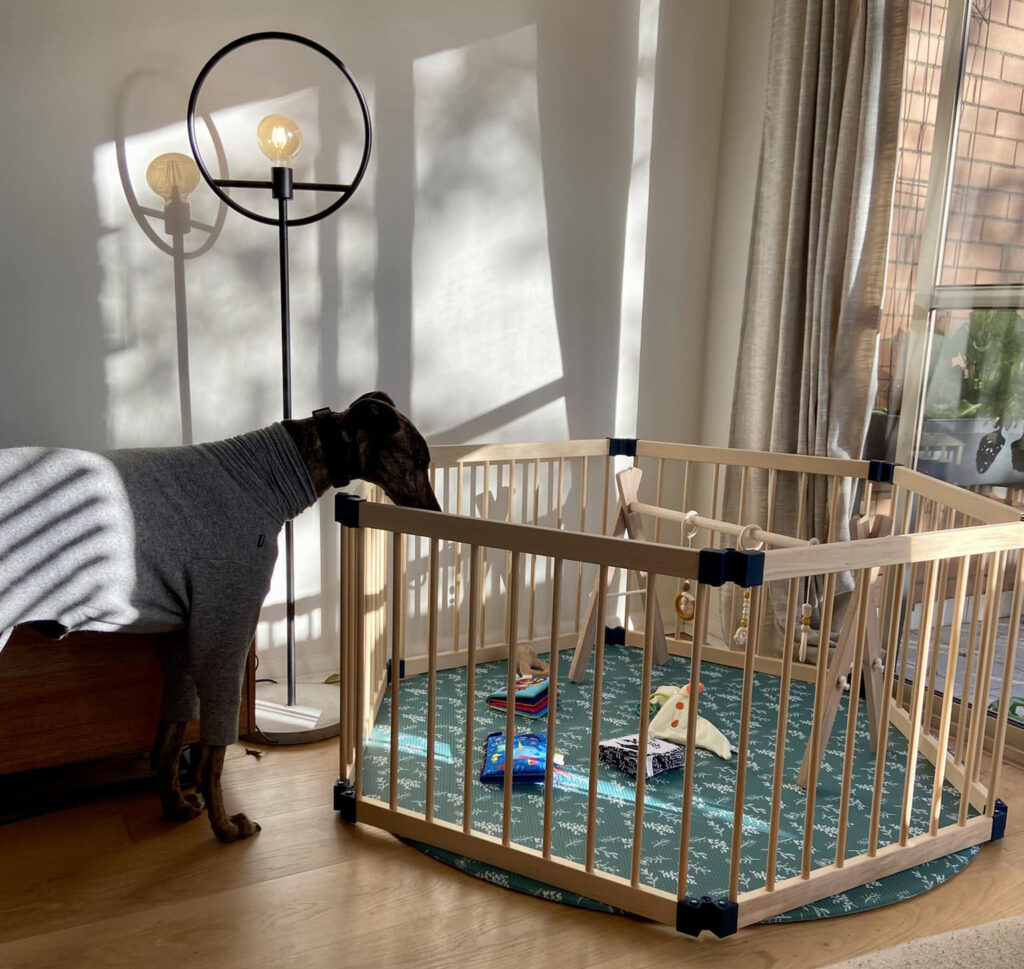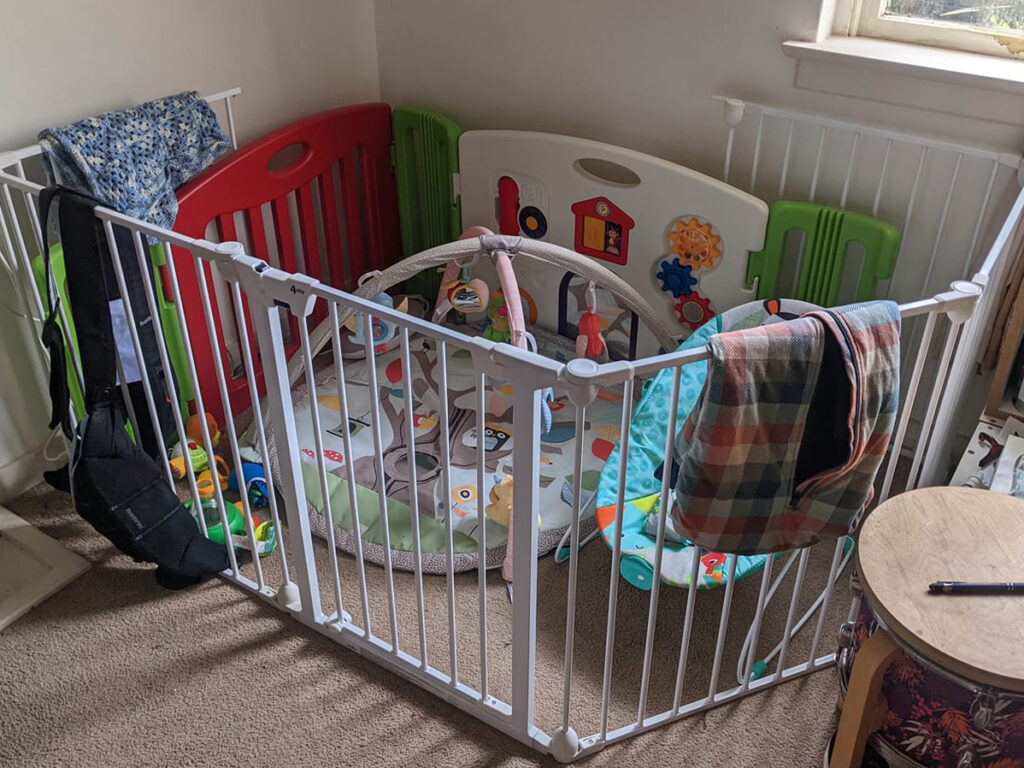Greyhounds have the potential to develop amazing friendships with children, thanks to their gentle and loving nature. But, like any other breed, it takes time, patience, and respect of their space.

When our kennel kids arrive at Greysland, they’ve had very little contact with the outside world. Children are no exception and knowing how to behave around them won’t come naturally.
We’ve put together some helpful tips to set your hound up for success while ensuring a safe environment for all.
When you already have children and you are planning to adopt a hound:
Manage the environment!
Young children and toddlers may not be aware of how to interact with dog. Their movements can be unpredictable, and unfortunately all too often they end up grabbing, pulling and striking at dogs. This can be confronting for your hound. Active supervision is key! Prevent problems from occurring by creating safe spaces and managing interactions. This may also need to be put in place for older children who haven’t had much experience interacting with pooches.
Baby gates and play pens are a great way to create separation. Think about the layout of your home and consider where you can place baby gates and play pens for convenience and easy separation.

Ensure your hound has a safe and comfortable place to retreat to, off-limits to children. Teach children that the dog bed is off-limits and never to approach a dog that is on their bed. This is also the case when your hound is lying down anywhere that is not their bed. Please don’t approach them, startle them, or crowd their space.
Teaching consent
Get your children used to the idea of consent before bringing your hound home. Familiarise them with the consent test, and teach them to pat gently and not to hug or kiss. If your child is a newborn or too young to understand what consent is, we recommend putting a plan of management in place. This ensures the comfort of your hound, and in turn the safety of your child.
Always keep food separate
It’s far too easy for incidents to occur when kids, hounds, and food intersect. Always have a quiet area away from children to feed your hound, and vice versa. Prevent your toddler from crawling around with food so there is no opportunity for your hound to attempt to take the food.
Remember that toys look like toys, whether a child’s or a hound’s
To a hound, there is not much difference between their toys and children’s toys. We recommend that children play with their toys away from your hound and to ensure your child knows not to take toys away from them. Remember to always trade up if they do get hold of your child’s toy! Swap the thing you need to get from them by offering them a more exciting toy or a treat away from the thing you need them to give up. When your hound is engaged elsewhere you can pick up the off-limits Item. If your child doesn’t yet understand, then again, environmental management is key. Don’t give your hound access to their toys.
Schedule in quality time
It is all too easy to overlook the needs of your hound when you have children and the hustle and bustle of daily life keeping you occupied. It’s so important to remember that your hound is part of the family with their own emotional needs. They cherish the time spent together so it is important not to leave them out. Consider rostering walk and play time with them.
When you have already adopted a hound and are planning for a baby:
If you have a hound at home and you are newly expecting, we highly recommend a few sessions with a qualified “force free” dog behaviouralist.

We recommend this early in your pregnancy for a smooth transition. This new arrival will mean a host of unfamiliar experiences, and it will take some time for your hound to acclimatise. Leaving this until your baby is born, already a big adjustment period for all, will exacerbate the high-pressure environment.
With a behaviouralist, you’ll gain some great tips on how to create a safe and comfortable environment for all as you navigate this exciting time in your life.
Some of the areas a behaviouralist will provide invaluable insight will include:
- The ‘new normal’ and what this means for your hound
- How to ensure your hound is comfortable with a baby crying well before the baby arrives
- How to get your hound used to walkies with a pram and baby in tow
- Getting ready for the first meeting
- Establishing no-go zones
- How to manage play time with play pens
- Learn how to read your hound’s body language
- Learn what makes a safe interaction

We hope the above tips help you feel more confident in creating a safe and successful relationship between your hound and your children.

